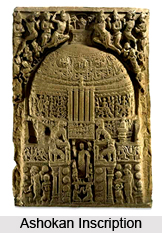 India witnessed a very well organized local administration under Mauryan Empire. The government was hierarchy in nature. Staffs were recruited in order to ensure smooth running of the empire in all levels.
India witnessed a very well organized local administration under Mauryan Empire. The government was hierarchy in nature. Staffs were recruited in order to ensure smooth running of the empire in all levels.
District and Town Administration
The revenue and general administration in the districts were administered by sthanikas and gopas. They had their own staffs. The gopa were in charge of five to ten villages in which he supervised maintenance of boundaries, registered gifts, sales and. Mortgages. He also kept an accurate census of the people as well as their material resources.
A sthanika had similar duties in the district and the gopas functioned under him. They were responsible to the samaharta. Urban administration was organised on similar lines under a nagarika or city magistrate with sthanikas and gopas assisting him.
Village Administration
Villages were semi-autonomous. They enjoying a good deal of freedom in ordering their affairs; they regulated land and water rights, cultivation and payment of revenue through the gramani. Gramani was an official of the central government. The elders of the village have a large share in guiding the people as well as in assisting the officials of the government in disposing of petty disputes arising in the village. Cultivable land was parcelled out in estates that belonged to individuals. The bureaucratic check and control was provided by officials openly charged with such duties of inspection, audit and report as well as by the regular employment of spies.
Administration of Provinces
Empire was divided into a number of provinces each administered by a governor. Mostly the governor was the princes of the royal blood. The provincial courts were smaller replicas of the imperial court at Pataliputra, from which the emperor directly administered the home provinces. Probably there was a distinction between rural and urban administration.
This article is a stub. You can enrich by adding more information to it. Send your Write Up to content@indianetzone.com



















